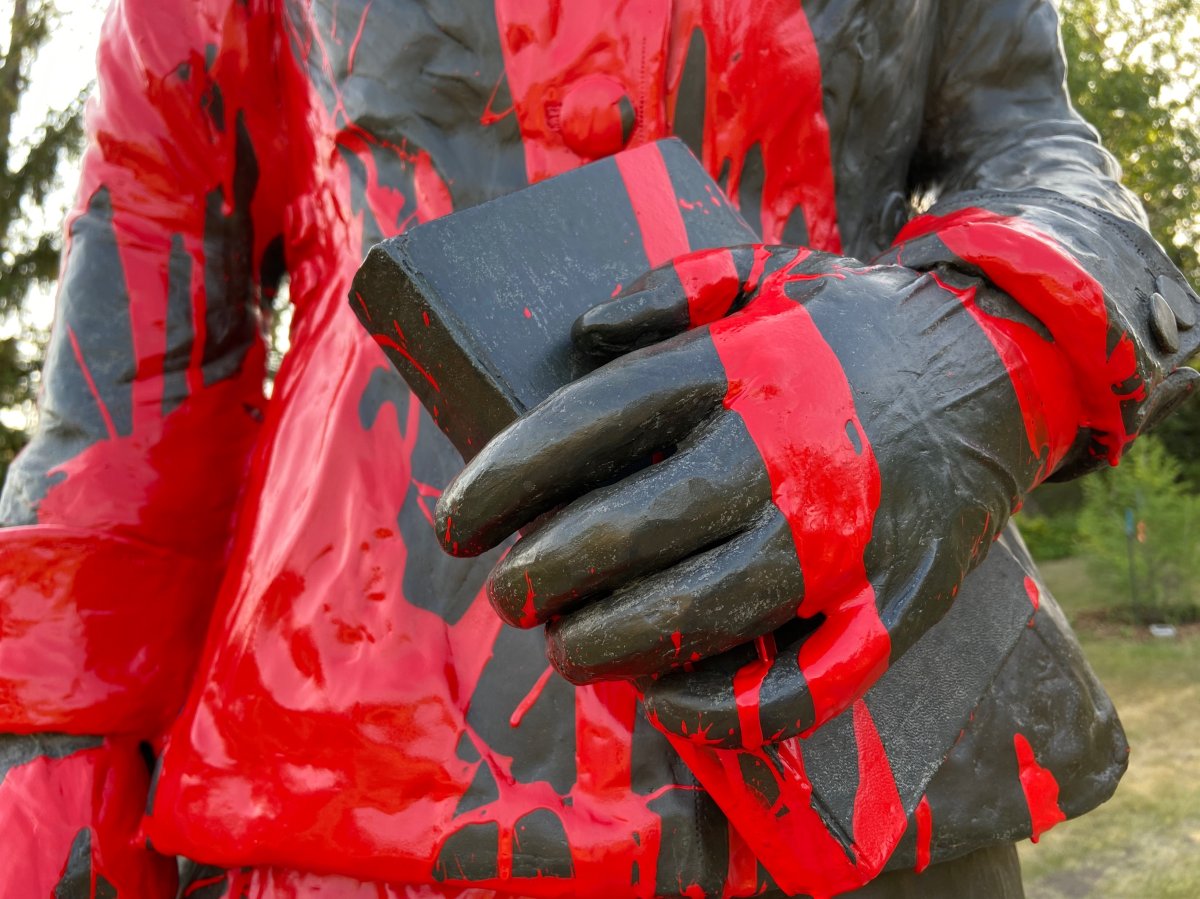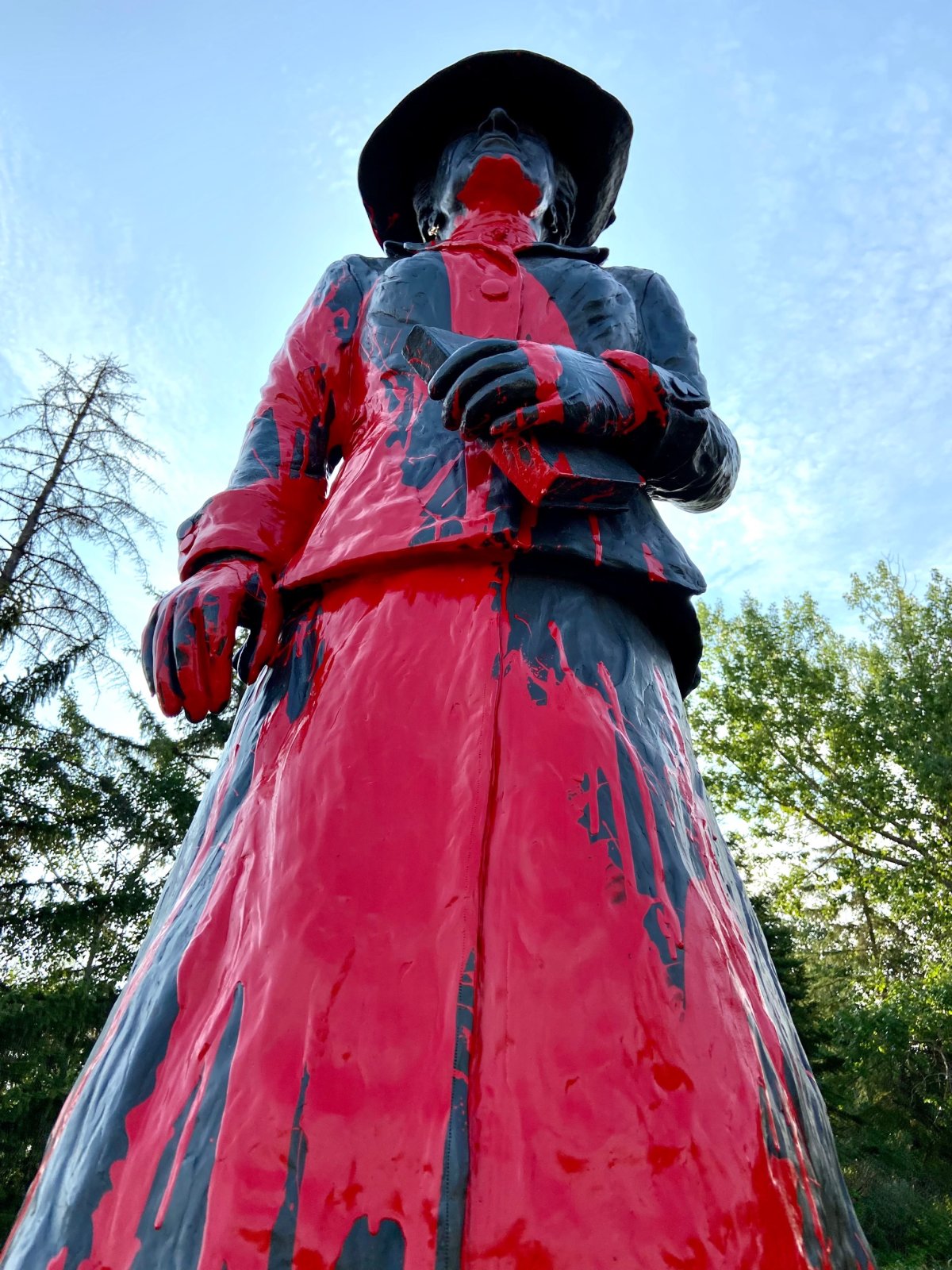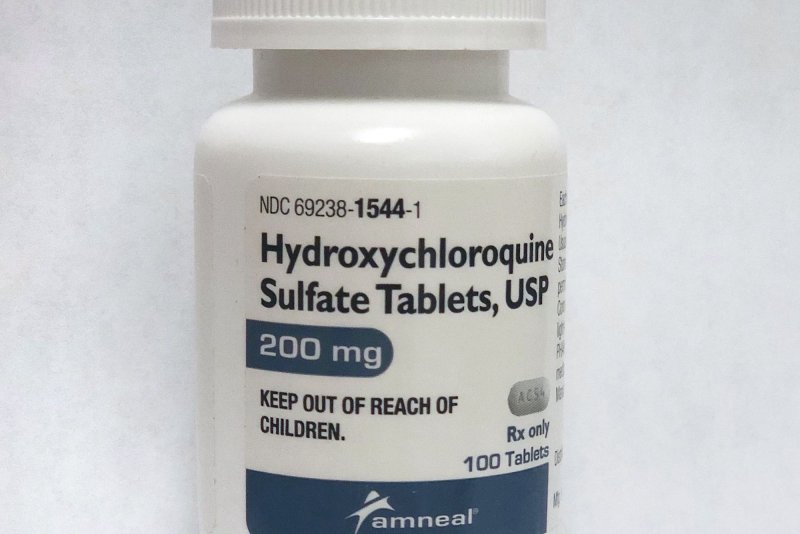Emily Murphy statue in Edmonton defaced with red paint
A statue of Emily Murphy in Edmonton’s river valley has been defaced with red paint.

Red paint covered the Emily Murphy statue Tuesday morning and the word “racist” was written on the plaque on its base.
Murphy was one of the Famous Five behind the Persons Case, a campaign to have women declared persons in the eyes of British law. However, her views on immigration and eugenics have been criticized as racist and elitist.
“Emily Murphy, along with all the Famous Five and most social reformers of the period, ascribed to the philosophy of eugenics; this idea that there was superiority of the races and, in particular, people of northern European Christian decent were superior,” explained Rebecca Sullivan, a professor in the Gender and Sexual Studies program at the University of Calgary.
“They tried all different kinds of ways to prove that they were superior. I’m sure many of you have heard about the idea of being high brow versus low brow — that actually comes from physically measuring the forehead with calipers to prove that white northern European-decent people had higher foreheads because they had bigger brains.”
Sullivan said using the word racist to describe Murphy “is not inaccurate,” pointing to a publication called The Black Candle. Under the pseudonym Janey Canuck, Sullivan said Murphy wrote the piece which focuses on the drug trade and criminalization of illegal drugs.
Sullivan said the piece “singles out in particular Chinese, Greek… and of course African immigrants, were all targeted in this piece as genetically inferior and therefore more susceptible to vice.”
“It framed it all around moral superiority, and intellectual inferiority, like the inability of racialized immigrants and First Nations to withstand these vices and that they were bringing the rot into Canadian society — meaning white Christian society, fair-complexioned.
“There’s no two ways to read The Black Candle. It’s just full-blown racist.”
HER MOST INFAMOUS BOOK WAS THE BLACK CANDLE
ABOUT THE WHITE SLAVE TRADE, RUN BY ORIENTALS WHO IMPORTED OPIUM AND MARIJUANA. AS A RESULT SHE INTRODUCED THE NARCOTICS ACT IN CANADA.
Sullivan said removing the statue will not erase history and she would like to see larger conversations around figures like Murphy.
“What I want to do with the history of Emily Murphy is understand it in a much more comprehensive and complex manner,” she said.
“Does that mean that maybe we stop for a while with statues and parks being named after people who caused a lot of harm? Sure. Will we continue to teach Emily Murphy in the classroom? I will. Nobody is saying don’t teach Emily Murphy. Nobody is saying don’t teach the Famous Five or the Persons Case. We’re saying teach it better.”
Murphy was born on March 4, 1868 in Cookstown, Ont., and died in Edmonton on Oct. 27, 1933.
Late Tuesday afternoon, city manager Andre Corbould issued a statement about the statue being vandalized and acknowledged “the strong emotions and polarizing opinions that arise when we consider the attitudes and beliefs of historical figures whose actions no longer reflect our modern ideas and values.”
“We are listening to these concerns and are taking steps to determine how to handle these issues through our work in revising our Naming Committee Bylaw under City Policy C509B, and our Statuary Policy C459,” he said. “But this type of work takes time and must include the voices of all Edmontonians, not just those who believe they can solve such concerns through damage or destruction.
“Criminal acts will not drive city policy.”
Corbould said while attitudes and values evolve over time, government’s must keep pace, but also noted “that can’t happen overnight.”
“We ask for people’s understanding and patience so that the solutions we develop reflect our broader society,” he said.
“Vandalism solves nothing. It destroys property, it destroys the hard work of the artist who created the monument or statue and it causes greater anger and frustration.”
In a statement, the City of Edmonton also said the naming and the potential renaming of any park or place is an in-depth process that requires “engagement, research and community buy-in.”
Names can be submitted by residents, organizations, community leagues, developers and city departments.
The city is undertaking a review of the policy that outlines what kind of statues and monuments can be erected in the city. It was last updated in 1990.
“Current plans are for an amendment of the policy and procedures in 2022 to better reflect the current environment and city policy frameworks like the diversity and inclusion policy and the Indigenous framework,” the statement read.
Part of the revised policy will include procedures for dealing with complaints or concerns about specific statues or monuments. The public will be consulted during the process, the city said.
The Edmonton Arts Council was responsible for the cleanup of the statue, which was completed by Tuesday afternoon. The EAC estimates the cleanup cost about $1,200.
The statue is located in Emily Murphy Park on the south bank of the North Saskatchewan River.
It’s now known exactly when the statue was defaced. A spokesperson with the Edmonton Police Service said Tuesday afternoon that she could not confirm whether the incident was reported to police.
– With files from Phil Heidenreich, Global News and Kirby Bourne, 630 CHED
Emily Murphy statue splashed with red
Author of the article:Nicole Bergot
Publishing date:Jul 13, 2021 •

The statue of Emily Murphy — one of the ‘Famous Five’ who in 1927 fought to have women declared as ‘persons’ — was found splashed with red paint Tuesday morning.
The statue in Emily Murphy Park was discovered vandalized with red paint, the word ‘racist’ also written in red, on Tuesday, weeks after the downtown statue of Sir Winston Churchill was slopped with red paint.
The Edmonton Arts Council had the Emily Murphy statue cleaned within two hours at a cost of roughly $1,200. The council also cleaned up the Churchill statue last month.
It was in August of 1927 that Emily Murphy invited four women — Nellie McClung, Irene Parlby, Louise McKinney and Henrietta Muir Edwards — to her house in Garneau. There, they drafted and signed a letter to the governor general of Canada, asking the Supreme Court to rule on whether women could legally be appointed to the Canadian Senate.
That letter launched the Persons Case, the lawsuit that determined, once and for all, that women in Canada were “persons” under the law, with an equal right to hold political office.
Murphy was a journalist, a novelist, a jurist, a mother, and a feminist crusader. But she was also racist, wanting to see Canada develop as a white, Anglo-Saxon country, and while she was sympathetic to the plight of Indigenous Canadians, she feared immigration was debasing the country.
In her writings, she attacked pretty much everyone: French-Canadians, Germans, Ukrainians, Jews, Greeks, as well as “Assyrians,” “Negroes,” “Chinamen” and “Hindus.”
“It sometimes seems as if the white race lacks both the physical and moral stamina to protect itself, and that maybe the black and yellow races may yet obtain the ascendancy,” she wrote.
Murphy was also a vocal proponent of the eugenics movement, and of Alberta’s Sexual Sterilization Act: “We protect the public against diseased and distempered cattle,” she wrote. “We should similarly protect them against the offal of humanity.”
Spokeswoman Mary-Ann Thurber said the city has not received any requests to remove the Emily Murphy statue or rename Emily Murphy Park.
“Edmontonians are encouraged to work with the City to discuss their concerns about place names or statues. Vandalism is not the answer to the challenging questions our society now faces,” she said in a statement.
The Edmonton Arts Council, on June 17, was called in to help clean up the Churchill vandalism.
Churchill, who served as prime minister from 1940 to 1945 and again from 1951 to 1955, is seen as a national hero for his leadership during the Second World War but held many views that would be deemed racist.
Other statues of Churchill have been vandalized before, most notably the one in Parliament Square in London, which has been defaced several times.
Elisebeth Checkel, the president of the Sir Winston Churchill Society of Edmonton, said at the time Churchill has a complicated legacy and believes it is important to look at him in a balanced way.
“If we look at any historical figure, we will find the same thing,” Checkel said. “If we look at almost any person from the 1880s, we would find their views were if not repugnant to us nowadays, we would find they were disagreeable, for sure. If you look at Churchill’s later actions and life as he grew, as we all hope to do, his views did change. The balance should be celebrated because without Churchill we would not even have the right to protest in this country.”
In the wake of the Churchill vandalism, Mayor Don Iveson said in a statement that he welcomes healthy debate on legacies in society.
“I know historical monuments and sculptures, here and elsewhere, are at the heart of an emotional debate regarding what legacies and stories we venerate as a society,” he said last month. “The city welcomes healthy debate and discussion on issues of inclusiveness, and how we go about addressing historical wrongdoings and inequities like systemic racism.
“However, I believe there are more productive ways to move society along towards a more inclusive and uplifting future than vandalizing city property,” the mayor added.
Iveson said the city’s naming committee is currently reviewing and revising policy and a report is coming back to city council on Aug. 24.
— With files from Kellen Taniguchi and Postmedia News










